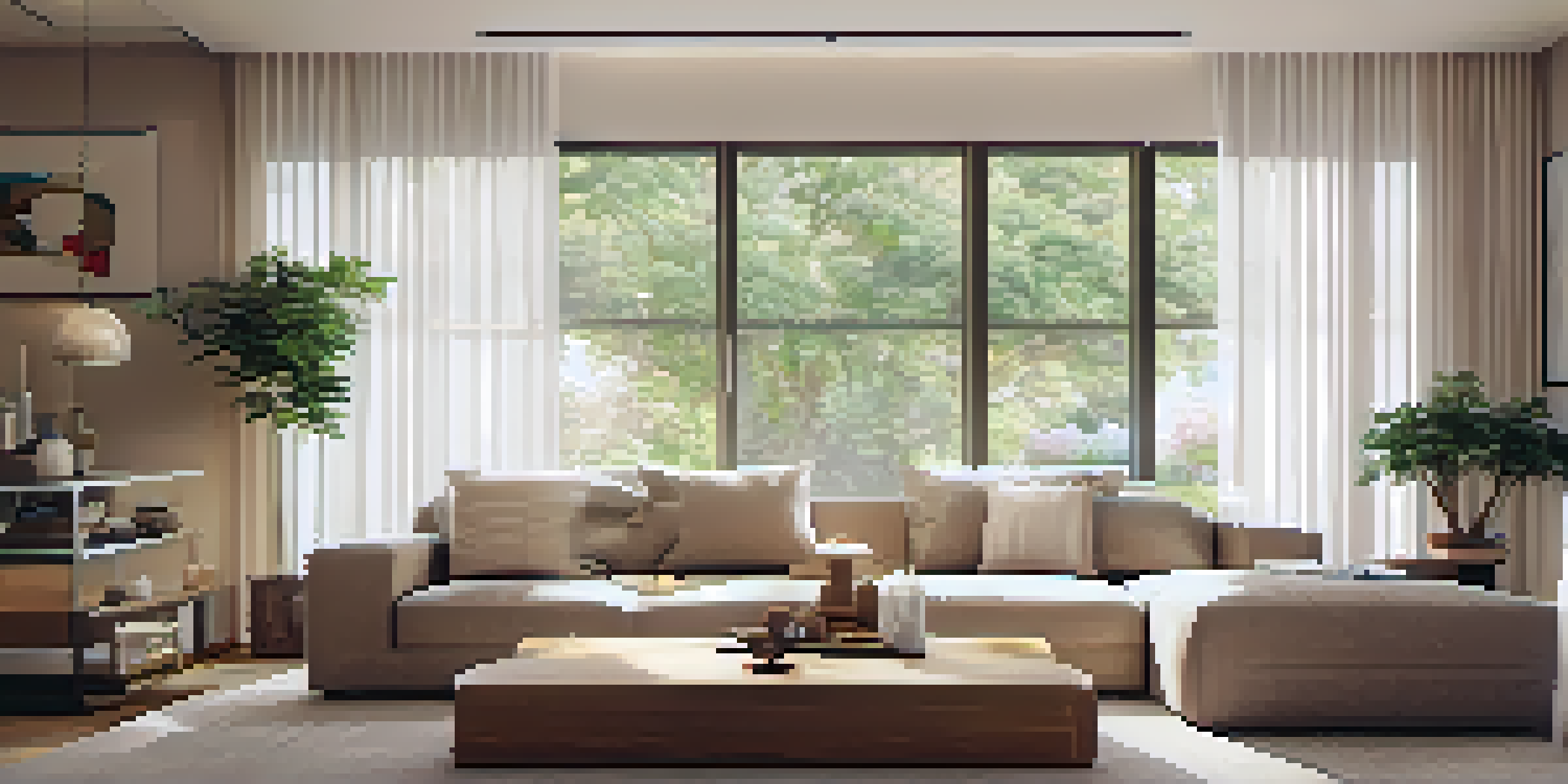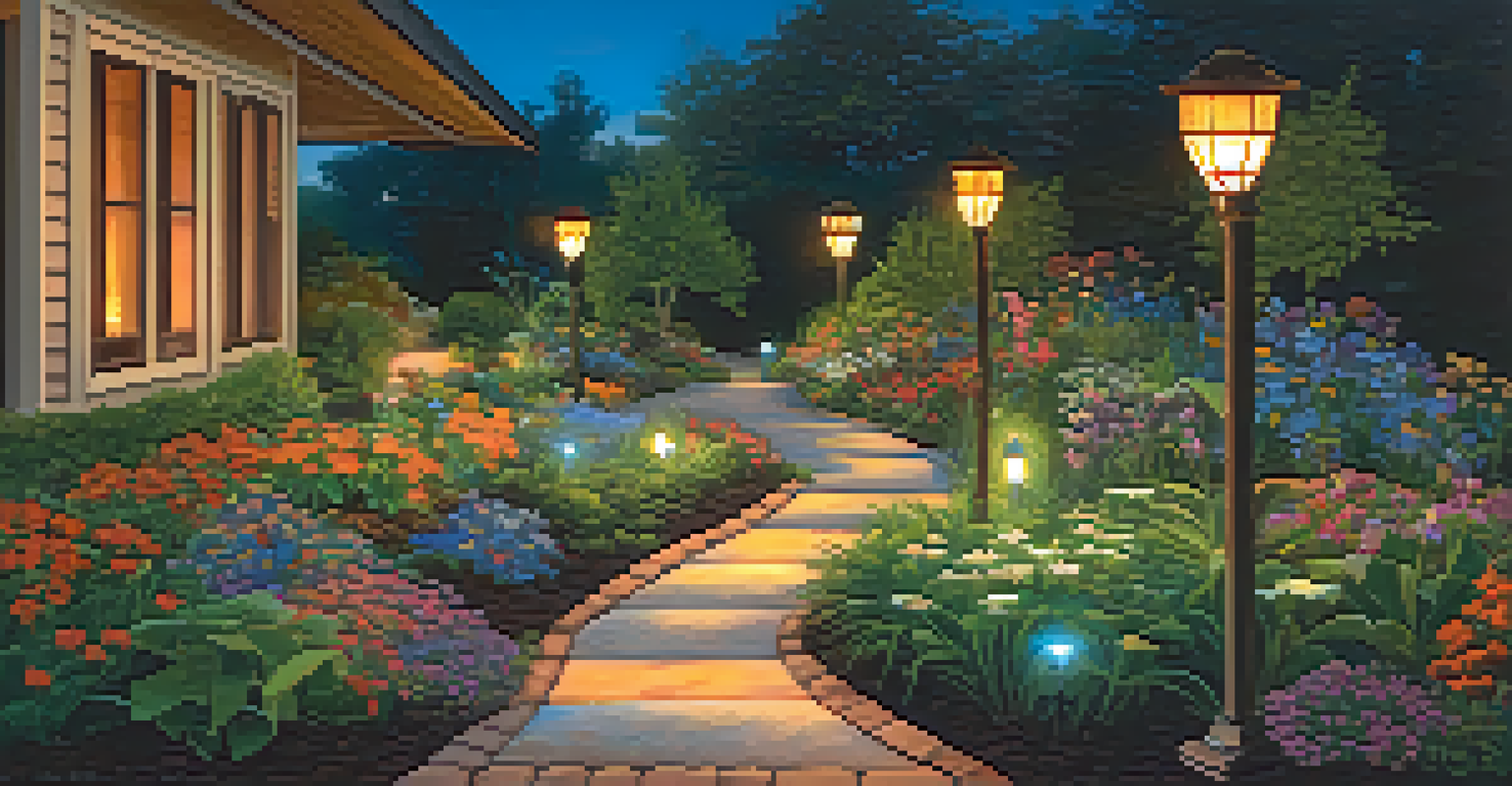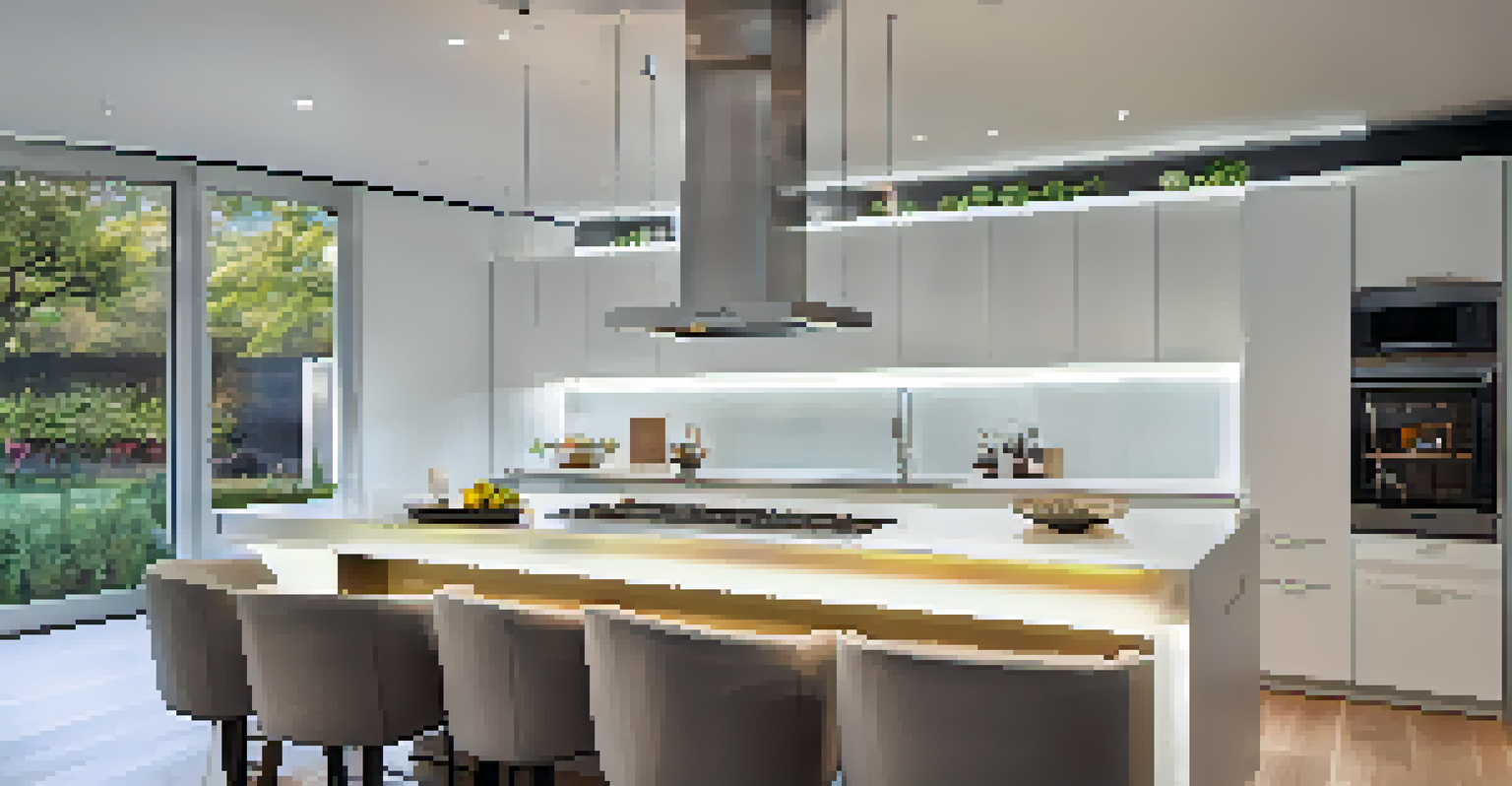Selecting Eco-Friendly Lighting Options for Home Projects

Understanding the Importance of Eco-Friendly Lighting
Eco-friendly lighting isn't just a trend; it's a vital step toward creating a sustainable home. By choosing energy-efficient options, you can significantly reduce your carbon footprint and contribute to a healthier planet. Think of it as a small change that leads to big impacts, much like turning off unnecessary lights can save energy without much effort.
The greatest threat to our planet is the belief that someone else will save it.
Moreover, eco-friendly lighting often translates to lower electricity bills. For instance, replacing traditional incandescent bulbs with LED lights can decrease your energy consumption by up to 80%. It's like finding money in your pocket every month, all while doing something good for the environment.
Lastly, embracing eco-friendly lighting can enhance your home's ambiance. Many modern options provide a range of color temperatures, allowing you to create the perfect mood for any occasion. Whether you want a cozy, warm glow for a movie night or a bright, vibrant light for a gathering, eco-friendly choices have you covered.
Types of Eco-Friendly Lighting Options
When it comes to eco-friendly lighting, there are several options to consider. LED (Light Emitting Diode) lights are among the most popular due to their longevity and efficiency. They use less energy and last up to 25 times longer than traditional bulbs, making them a smart investment for any home.

Another great option is CFL (Compact Fluorescent Lamp) bulbs, which consume about 75% less energy than incandescent bulbs. Although they contain a small amount of mercury, proper disposal and recycling can mitigate environmental risks. It's like having a two-for-one deal: saving energy while being mindful of waste.
Eco-Friendly Lighting Saves Money
Switching to energy-efficient lighting options like LED bulbs can significantly reduce your electricity bills and carbon footprint.
Lastly, solar-powered lights are perfect for outdoor spaces. These lights harness sunlight during the day and illuminate your garden or pathways at night. They’re not only energy-efficient but also add a beautiful touch to your outdoor decor, making your home more inviting.
Evaluating Lighting Efficiency Ratings
To make informed decisions about lighting, understanding efficiency ratings is crucial. Look for the ENERGY STAR label, which signifies that a product meets strict energy efficiency guidelines set by the EPA. This label is your assurance that you're selecting a product that truly benefits both your wallet and the environment.
Energy efficiency is not just about saving money. It is also about saving the environment.
Another important rating is the lumens per watt (LPW) measurement. This indicates how much light you get for the energy consumed; the higher the LPW, the better the efficiency. For example, an LED bulb with 100 lumens per watt is a far superior choice than a traditional bulb with only 15 lumens per watt.
Finally, consider the lifespan of the bulbs you’re choosing. A longer lifespan means less frequent replacements, which not only saves you money but also reduces waste. It's like investing in a high-quality pair of shoes that lasts years instead of a cheaper pair that wears out quickly.
Choosing the Right Color Temperature
Color temperature plays a significant role in setting the mood of your space. Measured in Kelvin (K), lower numbers (around 2700K) produce a warm, inviting glow, perfect for living rooms or bedrooms. In contrast, higher temperatures (5000K and above) emit a cooler, more energizing light, suitable for workspaces or kitchens.
When selecting color temperature, consider the function of each room. Warm lighting creates a cozy atmosphere, ideal for relaxation, while cooler lighting can enhance focus and productivity. It's akin to choosing the right playlist for a gathering—different vibes for different settings.
Smart Lighting Enhances Convenience
Smart lighting solutions allow you to control your home’s illumination easily, offering features like scheduling and energy usage monitoring.
Experimenting with different color temperatures in your home can be an enjoyable journey. Many LED bulbs offer adjustable color settings, allowing you to tailor the lighting to your mood or activity. This flexibility means you can easily switch from a calm, warm light to a bright, invigorating one, all at the flick of a switch.
Incorporating Smart Lighting Solutions
Smart lighting technology is revolutionizing how we illuminate our homes while promoting sustainability. With smart bulbs, you can easily control your lighting from your smartphone or voice-activated devices. This means you can turn off lights you may have forgotten about, reducing unnecessary energy consumption.
Additionally, smart lighting systems often allow for scheduling and automation. Imagine your lights dimming automatically in the evening or turning on as you arrive home. It’s like having a personal assistant for your lighting, making your life more convenient and energy-efficient.
Moreover, many smart lighting products now come with energy usage reports, helping you monitor and adjust your habits. This data can empower you to make informed decisions and further reduce your energy consumption, making your home both smarter and greener.
Installing Your Eco-Friendly Lighting
Once you've selected your eco-friendly lighting options, the next step is installation. Some lighting fixtures, like LED bulbs, are straightforward and just require a simple switch-out. However, for more complex installations, such as recessed lighting or smart systems, you might consider consulting a professional.
If you’re feeling adventurous, DIY installations can be a rewarding experience. Just make sure to follow safety guidelines, like turning off the power at the circuit breaker and using the proper tools. Think of it as a fun home improvement project that benefits both you and the planet.
Proper Maintenance Maximizes Efficiency
Regular maintenance of your eco-friendly lighting can prolong its lifespan and ensure optimal performance, contributing to a more sustainable home.
Don’t forget about positioning! The way you install your lights can maximize their efficiency. For instance, placing lights strategically to highlight certain areas can reduce the need for additional fixtures, leading to a more energy-efficient home.
Maintaining Your Eco-Friendly Lighting
Maintaining your eco-friendly lighting is essential for ensuring longevity and efficiency. Regularly check your fixtures for dust and debris, as this can affect brightness and energy usage. A quick wipe down can make a significant difference, much like keeping your car clean helps it run better.
Also, consider replacing bulbs before they burn out. Timely replacements can prevent energy spikes from struggling bulbs and keep your home consistently well-lit. It's a small effort that pays off in the long run.

Lastly, stay informed about the latest advancements in eco-friendly lighting. New technologies and products continually emerge, and keeping up with these trends can help you make even better choices for your home. Think of it as an ongoing journey toward sustainability—there's always more to learn and explore.